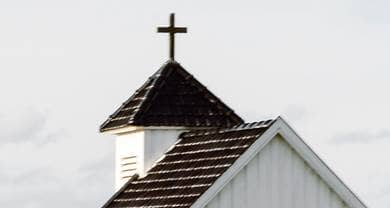- Trending:
- Forgiveness
- |
- Resurrection
- |
- Joy
- |
- Afterlife

RELIGION LIBRARY
Methodist
Community Organization
The institutional structure of Methodism is largely shaped by its early history. It was founded by John Wesley and his brother Charles not as a separate religion or church, but as a revitalization movement within the Anglican Church.
In the early years, Methodists were always also Anglicans. They were encouraged, even required, to attend their regular parish worship services, and it is there that they were expected to celebrate the sacraments. In addition, Methodists gathered as societies for preaching and revival. Societies were roughly co-extensive with Anglican parishes. Because Methodists already had an Anglican priest, and because there were not enough Anglican priests aligned with Methodism to fulfill all their needs for society meetings and preaching, many preachers were lay people, that is, not ordained. As such, they were not able to administer the sacraments.
A great part of Methodism's success is due to Wesley's organizational genius. Societies were spread out over large areas, and there were not enough preachers to have one per society. Wesley's preachers, both lay and ordained, were itinerants, riding a regular circuit to meet and lead each society. These leaders met in what Wesley called a Conference to coordinate activities and to advise him. He kept close control of the leadership in these Conferences until his death in 1791. Each society then was part of a larger structure called an assembly.
Each society was also subdivided into smaller groups called classes. Every member of a society was required also to be a member of a class. One of the tasks of Wesley and his itinerant preachers was to interview each society member regularly (usually annually) to assess their sincerity and progress. Methodists had to receive a class "ticket" that certified they were in good standing in order to remain part of their class, and therefore part of their society.
Once again the use of classes was a mark of Wesley's organizational genius and played a large role in Methodism's success. The classes originated as a fund raising idea, but Wesley quickly modeled them on the small "collegia pietatis" or "groups of piety" that he had experienced with the German pietists and that had so changed his own life. These classes met regularly (often weekly) to discuss their experiences, encourage each other in progress toward a sinless life, and to hold each other accountable. Each class had a leader, often a lay leader, and not infrequently a woman. It is largely these classes that generated the intense and long-lived commitment and dedication that marked Methodism and its missionary success.
While classes were comprised of any twelve society members in good standing, and were required, Wesley also instituted "bands," which were voluntary, and segregated by gender, age, and spiritual maturity. The idea behind these bands was to encourage spiritual development, and they were also modeled on German pietists. These bands, however, never really caught on, and currently play no large role in Methodism.
Following the Revolutionary War in America, Methodism quickly re-organized itself as a denomination separate from Anglicanism. This was in part because the Anglican Church had aligned itself with the crown to a great extent in the conflict, and was understandably unpopular. Because many Anglican priests left the colonies during the conflict, there was a radical shortage of ordained leaders. Wesley authorized Francis Asbury and Thomas Coke to be "superintendents" (their titles were later changed to "bishops," and invested them with the authority to ordain Methodist ministers capable of administering the sacraments. "Societies" quickly became churches or local congregations. Each region (which is descended from a circuit) is led by a bishop, and meets each year in an annual Conference. Each four years lay people and ordained leaders from all Conferences meet in a General Conference, which is the highest decision-making body in the United Methodist Church.
In England, Methodists remained part of the Anglican Church until John Wesley's death. At that point official leadership of the movement passed to the Conference. In 1795, four years after Wesley's death, this Conference began ordaining ministers to administer the sacraments, thus making Methodism a separate denomination from the Anglican Church in England as well.
Study Questions:
1. Describe Methodism's early relationship to the Anglican Church.
2. What was the purpose of early Methodist classes?
3. How did political struggle encourage the formation of the Methodist Church?










